Understanding the Physical Impact of Kayaking
Kayaking is an invigorating and fulfilling way to not only enjoy the outdoors but also simultaneously engage your entire body in a dynamic full-body workout. Read on to learn more about which muscles are targeted while kayaking!
What Muscles Does Kayaking Work? 6 Muscle Groups Targeted By Kayaking
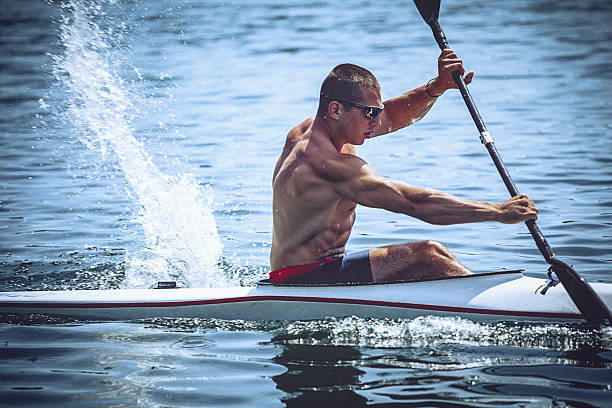
Kayaking is an awesome way to get some great exercise while enjoying the beauty of the world around you. It’s a full-body workout that engages your entire body as well as encourages muscle strengthening, endurance, and balance. Paddling requires strength, stamina, and proper technique in order to maintain control while on the water. So, let’s look at exactly what muscles do kayaking work so you can reap the most benefits from your time on the water.
Does Kayaking Build Muscle? Exploring Muscle-Building Possibilities
Kayaking can be a great way to build muscle, engaging all 12 major muscle groups and working core stabilizers, shoulder muscles, back muscles, arm muscles, and chest. It’s particularly effective when it comes to building strength in the shoulder area due to the power required while paddling — an activity that also utilizes your upper-body muscles as you reach forward with each stroke.
With kayaking being a full-body workout, stability is provided by tensing up both your legs and feet while propelling yourself forward, so any leg or foot movement utilizes these lower body areas.
To ensure good balance throughout this exercise routine, it’s important not to forget about those core muscles either; they help maintain solid footing, which ultimately brings more control over every turn no matter what conditions you face on the water.
It’s a Full-Body Workout: How Kayaking Engages Your Entire Body
Kayaking is an amazing way to get your entire body engaged and working. This water sport engages all 12 major muscle groups in the body, including muscles used during a rotation, such as in the core and upper body.
When you paddle fast-paced paddles, you’ll feel yourself engaging these muscles while building strength in your back, arms, shoulders, and chest. The torso rotation of kayaking also works out specific muscles: latissimus dorsi, rhomboids, trapezius, and serratus anterior.
Plus, it’s great for burning calories since it’s a low-impact exercise, so it’s ideal for those looking to be healthier but who don’t want to put extra strain on their joints or have any joint pain when they do exercises like running or jumping that involve different kinds of movements with higher levels of impact.
Specific Muscle Groups Engaged by Kayaking
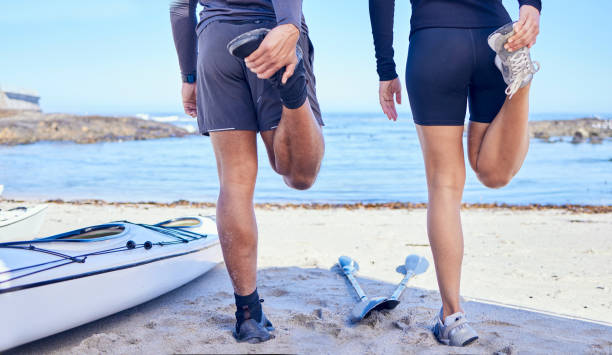
Kayaking activates and works several main muscles throughout the body—from the shoulders, chest, abs, arms, and back to the legs and glutes. The exercise promotes muscular symmetry on both sides while creating a strong core foundation.
Shoulder Muscles: Essential for Paddling
Whether new to kayaking or a seasoned veteran, shoulder and arm muscles are essential for paddling. A study found consistent activity patterns in several shoulder muscles during different phases of paddling.
Specifically, the latissimus dorsi, rhomboids, trapezius, and serratus anterior were targeted consistently when paddling. These four shoulder muscles work together with back and arm muscles for optimal performance on the water.
They provide strength as well as stability while managing fatigue over lengthy periods on the paddleboard or kayak. Regular kayaking will contribute to overall muscle development, endurance, and improved physical fitness!
What Muscles Does Kayaking Work in the Shoulder Area?
Kayaking is a great way to strengthen and tone the muscles that make up the shoulder and upper body. It’s a full-body workout that requires your arms, legs, core, and shoulders all to be working in unison for each paddling stroke. So, if you’ve ever been curious about which muscles you’re actually using when kayaking, here’s what you need to know:
- The deltoid muscles are one of the most important muscle groups engaged when kayaking. These are the large rounded muscles located at the top outside area of our shoulders and help with lifting the paddle away from your body during each stroke.
- Kayaking also engages the latissimus dorsi (lats) muscles located in the shoulders, which help stabilize us while we paddle.
- The trapezius muscles found in the shoulders are primarily used for movements above and below shoulder level, including paddling motion during kayaking.
- Paddlers should also recruit posterior deltoids – small muscles located at the back of their shoulder blades involved in stabilizing shoulder joint movements – while out on the water.
- Finally, rotator cuff muscles are activated as well, and they aid in strengthening shoulder joints for improved overall endurance while paddling for longer periods without feeling fatigued or soreness afterward.
Upper Body Muscles: Core Strength and Stability
Kayaking is an enjoyable full-body activity requiring a substantial amount of upper-body strength for successful maneuvering. As you paddle through the waters, your shoulders are primarily engaged in the generation of important propulsion and power.
Your back muscles assist thanks to their stability and balance, which help support good posture throughout the paddling process. Additionally, each stroke activates several targeted muscle groups – when paddling with balanced form your chest, arms, core, and even legs will all benefit from this comprehensive workout.
Core Muscles: The Powerhouse of Kayaking
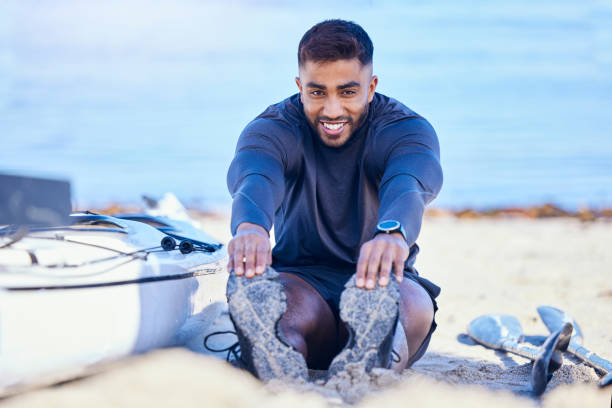
Kayaking is a full-body workout that targets many muscle groups throughout the body, but it’s the core muscles that are at the center of paddling. The abdominal muscles, along with those in the back and hips, play an important role in generating power and stability while kayaking.
They are responsible for torso rotation movement, which powers each paddle stroke. Core strength also helps keep your balance upright as well as allows you to move quickly if necessary to navigate changing conditions on the water.
Kayakers should focus on strengthening their core with regular exercise before they hit the water to ensure proper form and safe paddling technique. With consistent workouts targeting these key areas, kayakers can gain better control over their performance and help increase endurance over time.
Arm Muscles: For Effective Paddling
The main arm muscles used when kayaking are the biceps, triceps, forearms, and wrists. It is these key muscles that generate power for paddling and provide you with the dexterity to maintain control while out on the water.
Your upper body strength determines how hard you can pull through against your paddle and how long you can keep up a strong stroke rate before needing to rest—making it crucial for optimal performance.
A weak upper body will result in tiredness quickly setting in during your session on the water. This is why having strong shoulders, chest muscles, abs, and arms like developed bicep brachii muscles are essential for ease of paddling as well endurance over longer distances.
Upper Back: Maintaining Good Posture and Balance
Keeping your upper back in good alignment is essential for a successful kayaking experience. Your rhomboid muscles, which connect the shoulder blades to the spine and pull them together at the midline, are vital for helping you achieve this balance and posture as you paddle.
That’s why it’s important to do some stretching of these muscles before hitting the water – whether that means doing some reach-ups or incline flies or getting into child pose with your arms overhead – so that those key muscle groups remain engaged throughout your paddling session.
Proper form and technique should also be followed when out on the water; maintaining an upright torso helps ensure balanced strokes while avoiding any potential strain or injury caused by faulty motions.
Forearms: Grip and Control
Kayaking requires precise control of the oar, and that requires strong forearms. The forearm muscles are essential for providing essential grip strength and stability during paddling.
While they may not be as visible or get as much recognition as some other muscle groups, they play an important role in maintaining a strong, steady paddling motion. The muscles used include flexors like biceps brachii and extensors such as the anconeus, which help to counteract the pulling motion of the upper body when kayaking.
These muscles work together with core stabilizers to maintain balance while keeping one side from relying too heavily on either hand at any given point in time. Developing these larger muscles not only improves your form while paddling but also gives you more power when needed – making it easier to keep up your top speed for extended periods and effectively maneuver through choppy waters or tight turns.
Leg Muscles: Stability and Control
Kayaking is a great way to engage and strengthen the leg muscles required for stability and control during your paddling motion. Specifically, the quadriceps, glutes, calves, and hamstrings are all working hard to keep you balanced in the kayak.
During each stroke of the paddle, these muscles must contract in sync with one another to propel you forward through the water efficiently while also maintaining balance. The strength of your legs directly affects how powerful each paddling stroke will be as well as how gracefully (or awkwardly!) you navigate sharp turns or choppy waters! Leg conditioning plays an integral role when it comes to successful kayaking trips – emphasizing that good form cannot be undervalued!
Cardiovascular Benefits of Kayaking
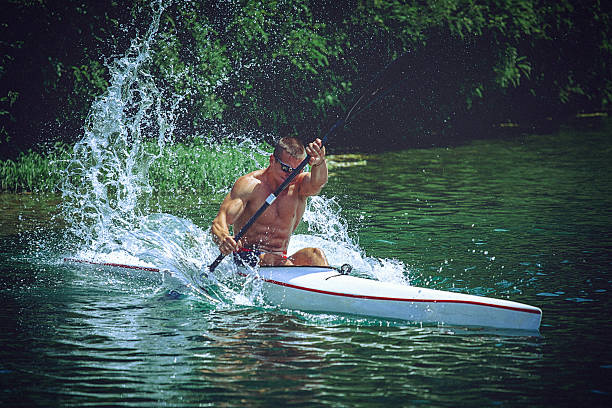
Kayaking is not just a great workout for your muscles; it also strengthens your heart and lungs, making for an excellent cardio exercise. Read on to learn more about the amazing benefits of this exciting sport!
Does Kayaking Burn Calories? A Look at Caloric Burn
Kayaking is an invigorating full-body workout that can help with fat-burning and toning. Not only does it give your arms, back, and core a solid endurance training session, but it’s also great for your heart health.
When kayaking at a moderate pace, an average person of 200 pounds will burn around 454 calories per hour – similar to the caloric expenditure of cross-country skiing or step aerobics.
Keep paddling at this rate, and you’ll shed those extra holiday pounds in no time! Paddle boarders who weigh the same as Kayakers benefit from 450 calories being burned in one hour’s worth of activity, making both popular calorie-burning aquatic sports.
Therapeutic Benefits of Kayaking
Kayaking is a low-impact, therapeutic form of exercise that can be beneficial for joint health and back pain. Read on to gain more insight into the myriad health benefits of kayaking!
Is Kayaking Good Exercise For Back Pain? A Potential Solution for Back Issues
Kayaking can be an excellent form of exercise for individuals experiencing back pain. This low-impact water activity provides the opportunity to increase muscle strength while gently increasing joint motion and is incredibly beneficial for improving postural balance.
When paddling, kayakers activate their lats (lower back muscles), upper arms, chest muscles, abdominal muscles, and even leg muscles! Improved gluteal, quadriceps, and triceps stability also help with lower back issues.
Additionally, stretching before and after a session can reduce tension in those sensitive lower-back areas caused by tightness or overworking out these particular muscle groups. As such, kayaking is a great way to simultaneously strengthen those key core muscles as well as improve posture – two important elements in warding off potential future aches in the lower region of your spine.
Kayaking is a Low-Impact Workout Ideal for Joint Health

Kayaking is an excellent low-impact and aerobic activity that offers many beneficial physical health qualities, with special bonuses for joint health. Rather than involving hard running or other high-impact sports, kayaking gently works the muscles of your arm stroke and requires stability from your core to maintain balance in the boat.
This helps improve overall joint flexibility as well as muscle strength without putting too much strain on joints like knees or hips. You can warm up these muscles with a few paddle strokes and then take laps around the lake with little effort expended while still working the muscles of your upper body.
Lower back pain can also be addressed through careful posture during those paddle strokes; this correct pose improves posture so that you don’t create tension anywhere else further down the spine or throughout other connective tissues in the body.
Summing Up the Health Benefits of Kayaking
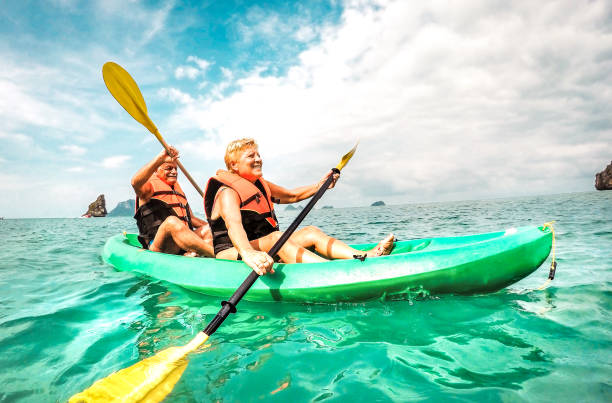
With its full-body workout benefits and the use of multiple muscle groups, kayaking provides an enjoyable and effective way to stay fit.
Summing It Up: What Muscles Does Kayaking Work? A Recap
Kayaking is an excellent way to engage your whole body and give it a workout. At its core, kayaking requires the use of 6 main muscle groups: the abdominals, lats (latissimus dorsi), biceps, forearms, shoulders, and back muscles – all working together for efficient paddling.
These primary muscles are responsible for applying power to each stroke as well as giving you the stability necessary to stay in control and move forward through the water. While some believe kayaking doesn’t build muscle mass due to its low-impact nature, others cite improved upper body strength from regularly engaging these muscle groups used when paddling.
Kayaking helps you develop strength in your chest muscles while promoting powerful arm motions with a focus on building up arm muscles such as your bicep and forearm. What’s more is that taking part in this full-body exercise helps strengthen shoulder muscles with rotator cuff exercises involved throughout every stroke motion, too!
Specific Arm Muscles Worked
Kayaking works several arm muscles, particularly those of the forearms and upper arms. Paddling requires the biceps, triceps, and forearms to generate power for controlled strokes to move the kayak forward.
The biceps pull the paddle back in a powerful motion towards the chest while the triceps force it out from there with an extension of your arm. Stronger forearm muscles will help grip and control your oar better when paddling through hard water or against currents.
Lastly, having strong Patty-Hand muscles is also crucial for stabilizing movements as you use extra effort on one side of the oar to direct your boat around obstacles or corners. All these specific muscles will be activated through paddling regularly; they are essential components for navigating downstream safely and efficiently!


Leave a Reply